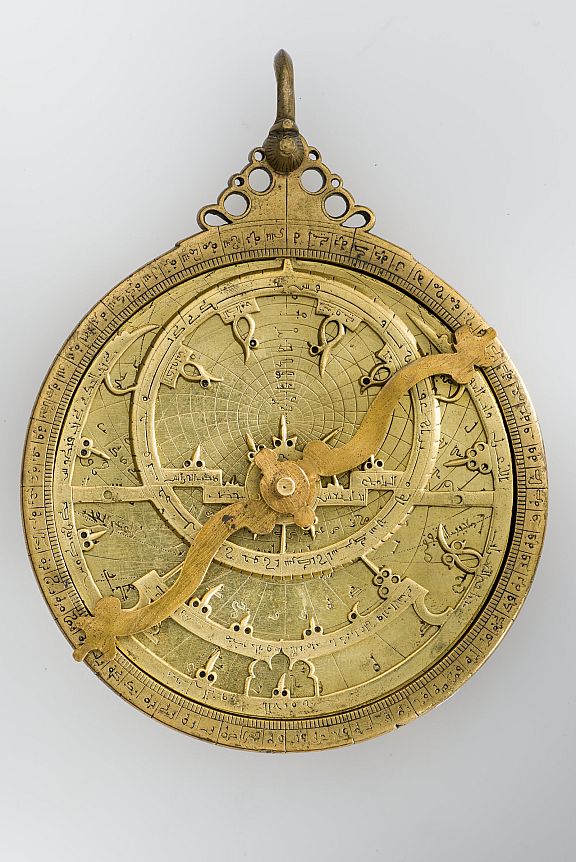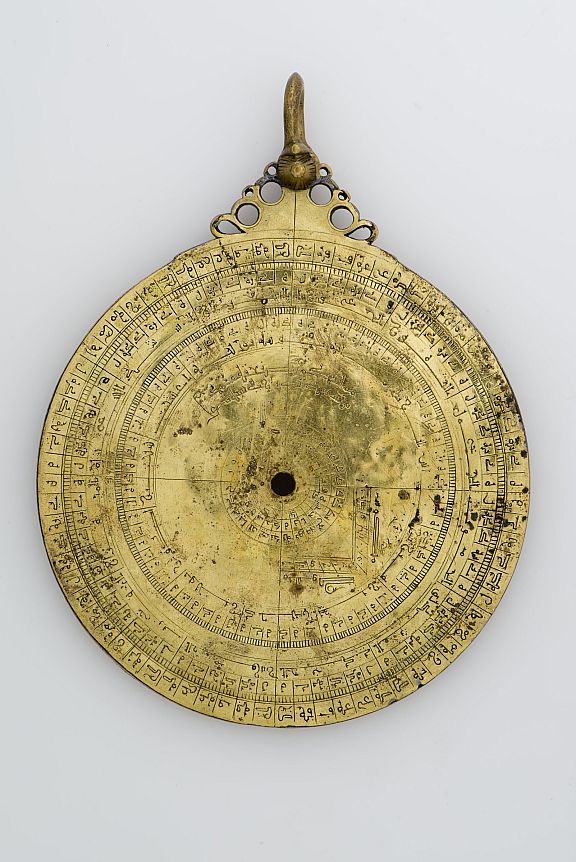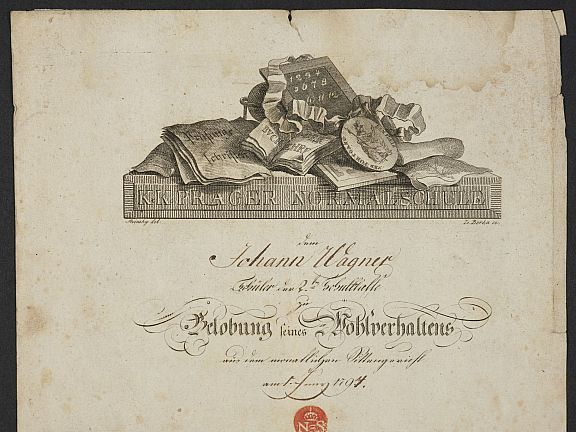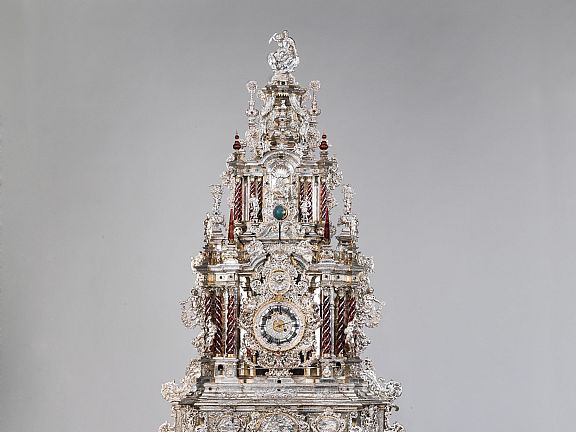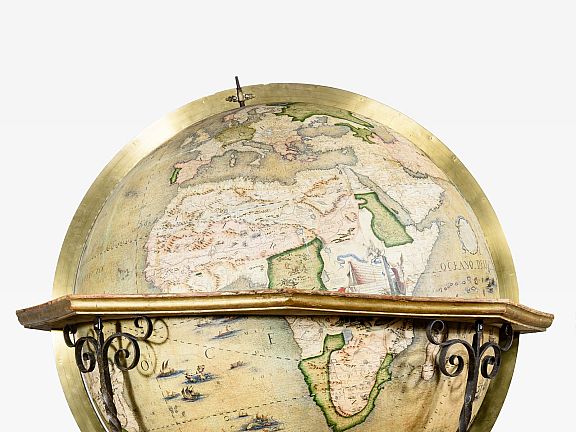Highlights
Astrolabe
- Artist
- Muhammad ibn Said al-Sabban
- Locality
- Andalusia
- Date
- 1073
- Material
- Brass
- Dimensions
- H. 14.9 cm
- Location
- Gallery 22
- Inventory Number
- 33/243.1-9
- Acquisition
- Bequest of Ernst von Bassermann-Jordan in 1933
- Epoch
- Romanesque
- Categories
- Clocks and Scientific Instruments
Description
The astrolabe is a testimony to the advanced sciences in Islamic Andalusia and at the same time the oldest scientific instrument in the Bayerisches Nationalmuseum. According to the Arabic inscription, it was made in the year 403 after the Hijra (1073 CE). The astrolabe is an astronomical instrument that depicts the stars in the night sky. The rotating openwork disc reveals some stars and the course of the Sun. The horizon and the coordinate system are located on the surface below. Astrolabes offer many possibilities of use, for example the determination of the date or the cardinal points. They were used from antiquity until the 16th century.
